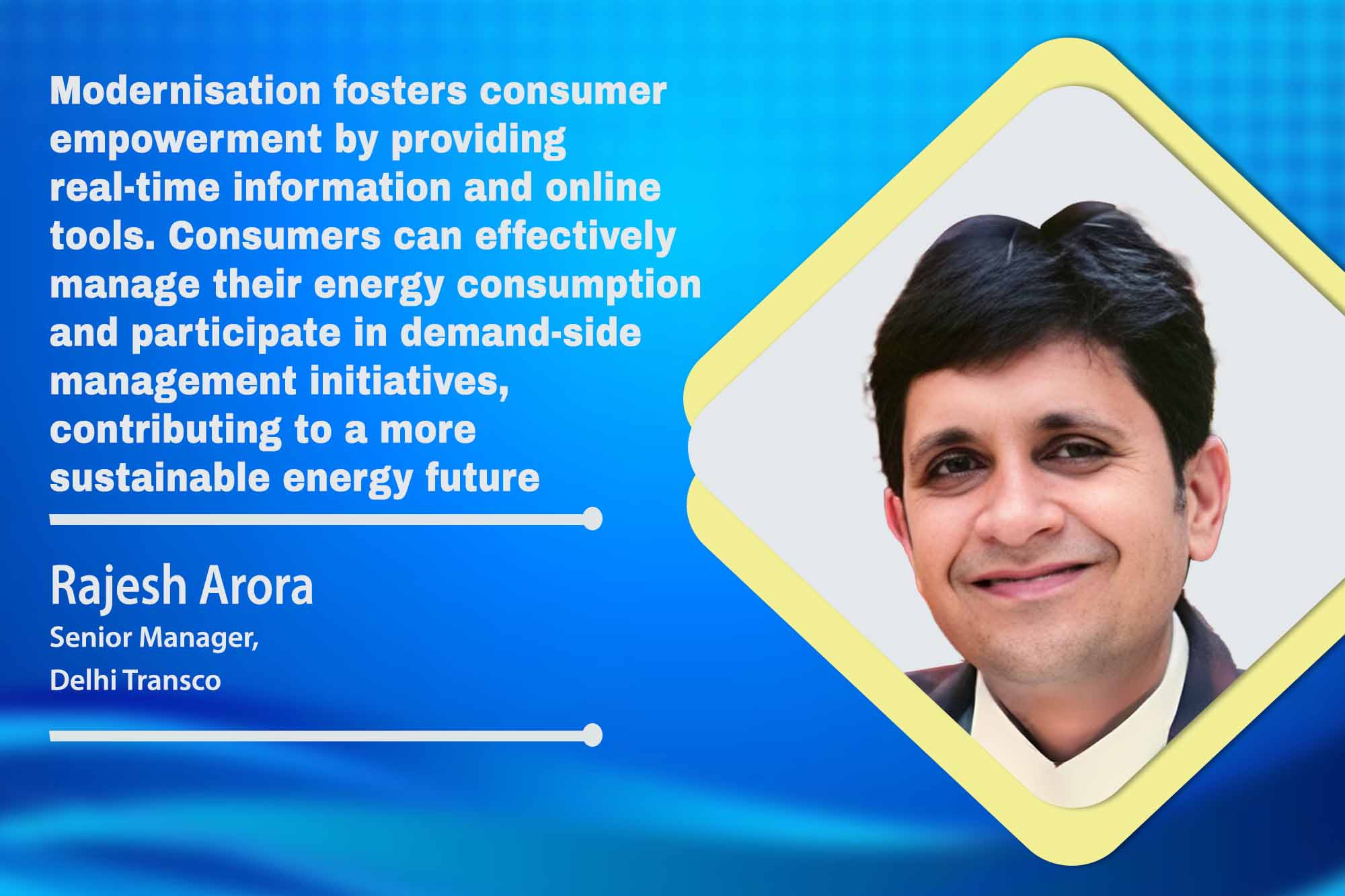Power grids embrace digital revolution for energy transition
By EPR Magazine Editorial March 27, 2024 11:36 am IST
By EPR Magazine Editorial March 27, 2024 11:36 am IST

Modernisation fosters consumer empowerment by providing real-time information and online tools. Consumers can effectively manage their energy consumption and participate in demand-side management initiatives, contributing to a more sustainable energy future.
Modernising power systems is essential to meet the evolving needs of society and overcome challenges related to reliability, efficiency, and sustainability. By embracing digital solutions and leveraging advanced technologies, power utilities can enhance grid performance, empower consumers, and pave the way for a more resilient and sustainable energy future. Rajesh Arora discusses the latest innovations in the industry in talks with the EPR Magazine.
Modernising power transmission and distribution
Modernising power transmission and distribution systems is imperative to ensure reliability, efficiency, and safety in today’s dynamic environment. Over the past three decades, significant advancements have reshaped the conventional power grid into a sophisticated network capable of meeting evolving demands. The transformation involves integrating cutting-edge technologies and reimagining traditional infrastructure to enhance performance across five critical sectors: planning, procurement, commissioning, maintenance, and consumer empowerment.
The traditional power grid, characterised by a linear flow from generation to consumption, has evolved into a complex network accommodating distributed energy sources, renewable power integration, and consumer-generated electricity. The advent of electric vehicles and the proliferation of charging stations further underscore the need for modernisation to support changing consumption patterns.
Driving forces in grid modernisation
Several key factors drive the modernisation of power systems. Reliability and Availability are paramount in responding to the growing need for an uninterrupted power supply. This entails building robust systems capable of minimising outages and maintaining uptime. Efficiency and Economic Growth are also critical drivers. By optimising resource utilisation and reducing downtime, modernisation leads to significant cost savings, facilitating economic growth and sustaining industrial productivity.
The integration of Renewable Energy sources further pushes the need for modernisation. Grids must adapt to accommodate fluctuating generation patterns while ensuring stability. Fault Detection and Safety mechanisms are essential components. Automatic detection systems enhance overall system protection, safeguarding infrastructure and minimising risks to utilities and consumers.
Moreover, modernisation fosters consumer empowerment. By providing consumers with real-time information and online tools, they can effectively manage their energy consumption and participate in demand-side management initiatives, contributing to a more sustainable energy future. Digital substations represent a paradigm shift in grid infrastructure, leveraging advanced technologies to optimise operations and enhance performance.By replacing conventional relay and control panels with intelligent electronic devices and process buses, digital substations reduce cabling, enhance reliability, and enable remote monitoring and diagnostics. Optical fibre instrument transformers enhance safety and reliability, paving the way for fully digitalised systems.
Online monitoring systems, such as distributed temperature sensors and partial discharge sensors, enable predictive maintenance, preempting potential failures and minimising downtime. Coupled with advanced analytics and condition monitoring, these systems empower utilities to optimise asset management and extend equipment lifespans.
Navigating utility modernisation challenges
Modernisation offers benefits but also brings challenges. Upgrading ageing infrastructure demands significant investment and regulatory approvals, affecting tariffs and financial sustainability. With increasing interconnectedness, cybersecurity becomes crucial, necessitating robust measures to protect against cyber threats and ensure data integrity and privacy. Adapting swiftly to evolving regulations and standards is essential for compliance, posing challenges for utilities.
Building a skilled workforce proficient in emerging technologies is crucial for successful modernisation efforts. Integrating new technologies seamlessly into existing systems while ensuring interoperability and compatibility poses operational challenges. Addressing these challenges is vital to harnessing the full potential of modernisation while mitigating risks and ensuring a resilient and sustainable infrastructure.
Addressing these challenges requires a holistic approach encompassing strategic planning, stakeholder collaboration, and technological innovation. By overcoming barriers and embracing digital transformation, power utilities can unlock unprecedented opportunities for efficiency, reliability, and sustainability in the evolving energy landscape.
Spokesperson: Rajesh Arora, Senior Manager- Delhi Transco
We use cookies to personalize your experience. By continuing to visit this website you agree to our Terms & Conditions, Privacy Policy and Cookie Policy.